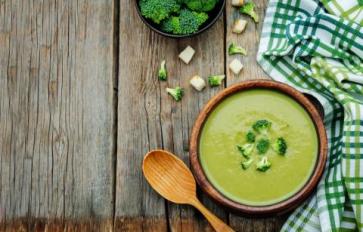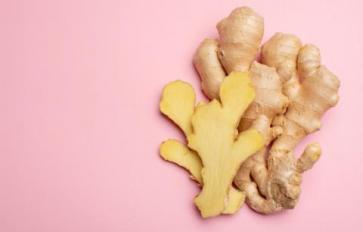
I eat a lot of foods that most Americans find odd. I love sauerkraut with my runny-yolk eggs, dulse seaweed in my raw kale salads, and ghee in my tea, on my toast, and by the spoonful.
Those knowledgeable in Ayurveda are probably aware that ghee is a staple fat and incredibly healing to the body. In Ancient India, ghee was the most common fat for cooking due to its high smoking point and delicious taste. When made from cows that have pastured, ghee contains incredibly high amounts of vitamins A, D, E, and K, as functional medicine practioner, Josh Gitalis, notes. Additionally, ghee contains butyric acid, which is a helpful digestive, especially for those suffering from Crohn’s, irritable bowel syndrome, and other digestive systems disorders. Perhaps ironic to those who still believe that eating fat makes you fat, ingesting ghee can actually help you lose weight. A study published in the International Journal of Obesity in 2007 found that conjugated linoleic acid (CLA) reduced body fat and prevented holiday weight gain; as it turns out, ghee has very high levels of CLA.
All of this is well and good, but unless you’re ready to start downing it by the spoonful, how do you incorporate it into your daily diet in healthful amounts? Here are my favorite ways to use ghee in my everyday life—they might just become your favorites, too.
1. Ghee as a Cooking Oil
Forget about cooking with vegetable oils. Several studies, including a thorough article published in Time, detail the dangers of cooking with vegetable oils. Ingesting vegetable oils like peanut, corn, and canola can increase your risk of heart disease, in addition to being carcinogenic at high heats. So, how should you go about cooking, roasting, and sautéing your food? With ghee, of course!
I especially love the comforting taste of ghee with eggs. To make my favorite breakfast, gently heat a pan over a low flame until warm. Add a teaspoon to a tablespoon of ghee and gently heat for a few more seconds. With your ghee now warm, crack an egg or two into the pan and cook over low-to-medium heat until the whites are no longer clear but the yolk is still soft. I love making this breakfast with sautéed kale; simply sauté kale in a good amount of ghee and salt to taste. You can gently sauté your favorite vegetables using this same method. Another option is to steam your preferred vegetable, like broccoli, then melt ghee over top.
2. Ghee in an Elixir
Elixirs are magical or medicinal potions, but this doesn’t mean that they’re all fairy tale. Gitalis defines an elixir as an “sweetened aromatic solution serving as a vehicle for medicine.” Elixirs are drinks, usually teas, that contain a variety of herbs and other superfoods that increase our health in extraordinary ways.
Several pre-packaged elixirs can be bought at health food stores and online, but it’s fun to make your own. A must-have addition to your elixir is fat, and when you’re tired of coconut oil, try adding ghee. Try brewing a cup of your favorite herbal tea, or coffee for those who prefer it, and adding your favorite spices and superfoods. I like steeping a turmeric-chamomile tea then adding cinnamon, ginger, maca, raw honey, and a teaspoon of ghee, but feel free to add your favorite additions to customize your elixir. For more elixir recipes, check out cookbook author Meghan Telpner’s infograph here.
3. Ghee as a Treat
You might not think of butter as a sweet item, and perhaps it isn’t—until you pair it with something to create a satisfying treat. I like to keep my treats simple, so a common snack is sprouted toast spread with ghee, drizzled with raw honey, and dusted with cinnamon for a healthy take on cinnamon toast. You can use ghee to make delicious desserts, like ghee truffles, semolina pudding, and banana bread.
Making Ghee
As this health food catches trend, it’s important to know that taste will vary greatly depending on the quality of the butter used—which ultimately comes down to how the cows that produced the butter were raised. Try to find a brand who uses cows that are pastured on sweet, tender grass, resulting in gold-colored ghee. However, you can also make your own ghee.
Start with a high-quality butter (perhaps butter you can purchase fresh from a farmer’s market). Gently melt the butter in a saucepan over very low heat. You will notice the butter bubble and foam. After 10 minutes, remove the butter and strain through a very fine mesh strainer or cheesecloth. Discard the small bits of whey and reserve the golden liquid. You can find a very thorough tutorial by Wellness Mama on how to make ghee. I find that ghee lasts quite a while, but store it in the fridge if you’re worried about it turning quickly.
Do you use ghee? If so, what recipes do you like to incorporate ghee into?








